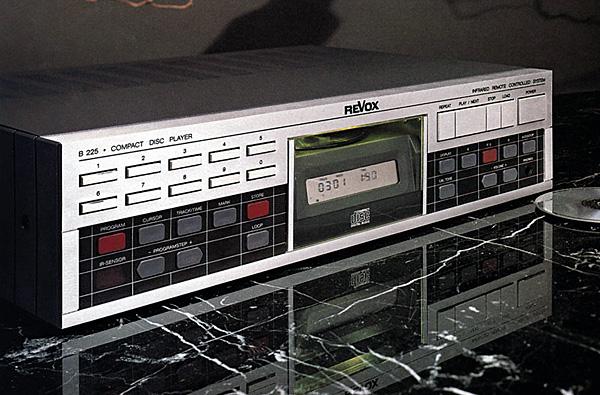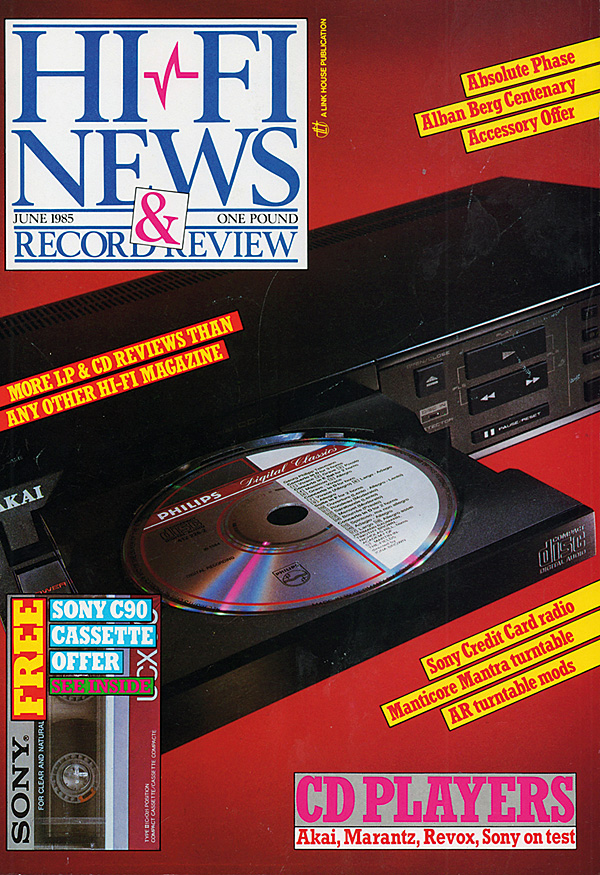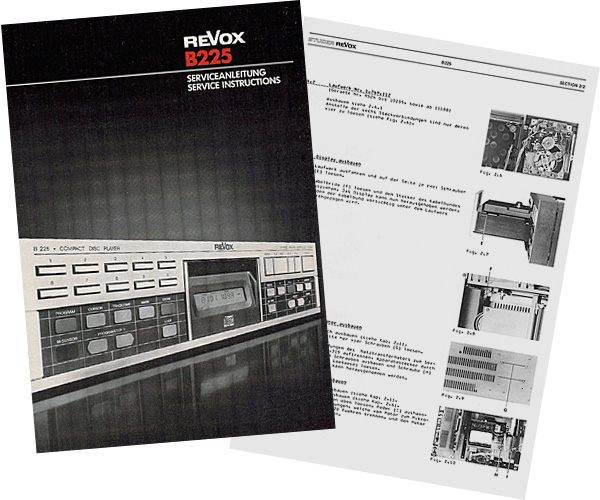Revox B225 CD player

 John Atkinson reviews a high-end CD player from a specialist Swiss brand
John Atkinson reviews a high-end CD player from a specialist Swiss brand
Audiophiles who have spent large sums of money on LP playing equipment, such as myself, find themselves coming up with a number of excuses when presented with the thorny problem of reconciling the increasingly general acceptance of CD with their own love for vinyl.
One which I have heard often is that 'of course, CD doesn't offer audiophile sound quality, as the companies making the players backed out of real hi-fi some years ago in order to compete in the "vertical music-centre market"'.
There may be a grain of truth in this as I feel that optimising any design to give the best sound quality remains an art, with good engineering only getting the designer 80-90% of the way – even if he or she has an unrestricted budget. And designers of products destined for the mass-market have to produce results within budgets that are hardly open-ended.

The entry of specialist hi-fi companies like Meridian, Mission, Yamaha, Nakamichi and Revox into the CD arena, however, will eventually show whether this is a fair attitude to strike or not. In the meantime, I have been living with the £777 Revox B225 CD player, which was introduced in the UK towards the end of 1984.
Slide Projector
A reasonably large machine at 450x109x332mm (whd), the B225 is styled to match the range of Revox components which started with the B251 amplifier and B261 tuner. Beautifully made and finished both internally and externally, the machine has a central tray, bearing a Philips mechanism and optical pick-up, which slides out for loading. This tray also bears an LCD display for track and programming information.
To the left of the drawer are the programming controls, including a 0-9 numeric keypad, while to the right are the usual transport controls, ± pushbuttons for variable output and headphone level, the headphone socket itself, and a power on/standby button (the machine's memories remain powered all the time the player is plugged into the mains).
The rear panel has the usual Revox two-pin mains socket, a socket for an optional wired remote control (an infrared unit is available if the CD player is used as part of an appropriate all-Revox system), and two pairs of phono sockets, one pair of fixed level, the other variable.
Internally, two motherboards carrying all the switches run behind the front panel either side of the transport drawer, and daughter boards plug into this, keeping the discrete wiring to a minimum. The lefthand boards cover transport and programming facilities; the two on the right carry the familiar Philips chipset with its 4x oversampling digital filter allied to 14-bit D/A conversion, while analogue filtering, de-emphasis and output are via the ubiquitous 5532 dual-channel audio-quality op-amp. A relay mutes the output while the circuitry stabilises upon switch-on.

Discs can be played in two ways, straight or programmed. Tracks can be accessed in the latter mode either by stepping sequentially through the disc or by pressing a two-digit number corresponding to the wanted track on the numeric keypad and pressing 'play'. A red button transfers operation to the programming section, and up to 19 selections can be programmed into the B225's memory. These can be tracks, an unbroken selection of tracks, ie, tracks 4-10 inclusive can count as one programming selection, or timed sections.
This function is performed by changing the display to time mode and entering the desired start and stop times with the keypad. Once set, the programme can be 'previewed' by stepping through with ± pushbuttons. The only missing function is total disc playing time upon loading, but as this is only of use to CD software reviewers in my experience, I suppose Revox felt justified in omitting it.
![]() Sound Quality
Sound Quality
I used the B225 for my regular CD listening over a period of about four weeks. It was also subject to A/B listening tests in comparison with the Meridian MCD player [see p156], both machines having similar D/A converters and transports. (Care was taken to match the output levels of the two using a test disc calibration tone and an AC millivoltmeter.)
Comparisons were also made between CD and LP played via a Koetsu Red/Ittok/Sondek front-end. Speakers were Magneplanar SM Gas, driven by my Krell KSA-50/Audio Research SP-10 combination.
I have to admit that I was initially disappointed when first using the B225, with the audio taken from its variable outputs. After some glowing reports on the grapevine, I had perhaps had my expectations built up overmuch. The sound was both a little brighter and clearer than I was used to from my Marantz CD63 or from a Yamaha CD-X1, and stereo imagery, though beautifully precise laterally, was somewhat lacking in depth and differentiation between the separate instrumental images.
























































